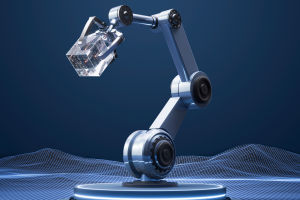Hey, Lykkers, ever wonder what powers those incredible industrial robots you see in factories have? At the heart of them is the robotic arm—an essential piece of technology that's revolutionized manufacturing.
Today, let's dive into some of the most commonly used robotic arms in industrial robots, and why they're so crucial.
The Backbone of Industry: Robotic Arms
Robotic arms have become the workhorses of modern industry. They're the unsung heroes behind everything from car assembly lines to delicate electronics manufacturing. However, not all robotic arms are created equal. Here are some of the most widely used types:
1. Articulated Robots: The All-Rounder
Articulated robots are perhaps the most common type of robotic arm you'll find in industrial settings. These arms typically have anywhere from 2 to 10 joints, allowing for a wide range of motion and flexibility. Think of them as the jack-of-all-trades in robotics.
Applications: Welding, material handling, packaging, and assembly.
Why It's Popular: Versatility. These arms can mimic the motions of a human arm, making them perfect for tasks that require precision and adaptability.
Example: FANUC and ABB are two big names producing articulated robots used in industries worldwide. Their models are known for being highly reliable and efficient.
2. SCARA Robots: The Speedster
Selective Compliance Articulated Robot Arms, or SCARA robots, are known for their speed and precision in a horizontal plane. They're ideal for tasks that require fast, repetitive motions, such as assembly and pick-and-place operations.
Applications: Electronics assembly, picking and placing small parts, and packaging.
Why It's Popular: CARA robots are optimized for quick and precise movements, making them a staple in industries where time is money.
Example: Yamaha and Epson are leaders in SCARA robots, offering models that excel in high-speed assembly lines.
3. Cartesian Robots: The Precision Player
Cartesian robots, also known as gantry robots, move in straight lines along the X, Y, and Z axes. This makes them incredibly precise for tasks that require linear motion.
Applications: CNC machining, 3D printing, and precision assembly.
Why It's Popular: Accuracy. Cartesian robots are known for their ability to perform highly accurate and repeatable tasks, making them perfect for precision manufacturing.
Example: Bosch Rexroth and Festo are key players in Cartesian robotics, known for their robust and precise systems.
4. Delta Robots: The Lightweight Champ
Delta robots are designed for speed and precision, particularly in tasks that involve lightweight items. These robots are commonly used in the food and pharmaceutical industries, where they handle delicate and fast-moving products.
Applications: Packaging, food processing, and high-speed sorting.
Why It's Popular: Agility. Delta robots are incredibly fast and can handle delicate items with ease, making them indispensable in industries where speed and gentleness are crucial.
Example: ABB and Fanuc produce some of the most widely used delta robots in industries where speed and precision are essential.
5. Collaborative Robots (Cobots): The Friendly Helper
Collaborative robots, or cobots, are designed to work alongside humans in a shared workspace. Unlike traditional robots, which are often fenced off for safety, cobots are built with advanced sensors and safety features to interact safely with human workers.
Applications: Light assembly, quality inspection, and machine tending.
Why It's Popular: Safety and ease of use. Cobots are designed to be user-friendly and safe, making them perfect for environments where humans and robots need to work closely together.
Example: Universal Robots and KUKA are leading the charge in the cobot revolution, offering models that are easy to program and safe to use.
Why Robotic Arms Matter
So why are these robotic arms so important? They're the backbone of automation, enabling industries to increase efficiency, improve precision, and reduce human error. In a world where time is money, robotic arms are the key to staying competitive.
Lykkers, the next time you see a product on a shelf, remember that a robotic arm probably had a hand in making it. These incredible machines are changing the way we build, move, and interact with the world around us.


